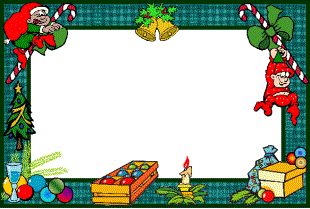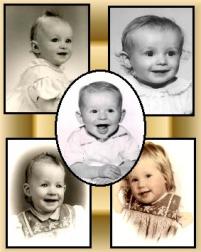|
|
||||||||||||||||||||||||
| Members Home Page | ||||||||||||||||||||||||
|
|
Photo
Greeting Cards are just scrapbooking in miniature. They have all the same
components as a scrap page � Background, Journaling, accents and of
course a photo (or two). You just shrink the format a little.
Like we�re always saying around here; sometimes you have to think
small to get big results. The other
upside to this project is that it�s one way to avoid holiday card
replication. What I mean is that when you create custom photo cards using,
of course, your own photos; it�s guaranteed, that no one will get a card
just like the one you send. "Right,"
and you�re thinking, "the chances of adding a create-a-card project
to my holiday schedule this late in the game are approximately as good as
my finishing Christmas shopping before New Years." Okay,
skepticism is healthy when taken in moderation. But you may not know about
the shortcuts you can take (and all the help PrincessCrafts.com can
provide you). Think of the shortcuts this way: you do the fun
part�designing the card, and then you could have someone else do the
hard part�printing the cards, licking the stamps, and putting the cards
in the mail. Delegation is what makes one person capable of accomplishing
an almost infinite number of tasks. So much for
those who are on an already tight schedule. For those with plenty of time
and creative initiative, there's also the option of starting from
scratch�Designing, printing, addressing, and mailing the cards all by
yourself. Of course that takes away from the family activity� but that
might be a good thing. Either way we
thought we'd suggest five holiday photo ideas that you can use or adapt
for your own, personal holiday photo cards.
Option number
one is to follow the time-honored tradition of sending family and friends
a new family photo�a photo that includes all of the family or at least
the kids. For this type of card, you have a choice. You can take a new
picture now, or use one of the recent ones you have on hand. If you're
short of time, pick one of the family vacation photos, or take a quick
candid picture of the kids wrapping gifts, playing in the yard, or just
clowning around with you or each other. Whatever
approach you choose, here are a few things to consider for holiday card
photos.
Holiday ghosts of the past What�s
gets more attention than a recent photo? A retro shot�one of you and your family on
Christmas years ago. How about sending that shot of your husband wrapped
in Christmas paper at age 6 to his side of the family. For this idea,
you'll need a scanner, or you can take the photo or a negative to a local
photo lab and have it scanned. Those picture stations you see in stores
will not only make prints, but most will put your photos on disk as well. There�s
quite a range of options on how to edit old photos. The most popular is to
convert the digital image to sepia (redish brown) tone. If you use an
image-editing program such as Picture It! Digital Image Pro or others, you
can embellish the image with additional effects such as torn edges. Many
of mine come that way naturally just from time and abuse.
Another
option is to create a montage or collage of old photos. This option is
especially good if you have photos of individual family members, but no
photo of the entire family. Again, you can use your image-editing program
to assemble the collage (see above). Montages
can be tricky. You�ll need a theme for the montage before you assemble
all the photos you want to use. Once you have a clear idea of the theme
and how many photos you want to include (remember�think small), you can
then size the photos, choose a background image and determine the layout
of the photos in the montage. If you choose to use a border or frame, try
to keep it simple. With a montage, the more elements you add, the more
difficult it will be for family and friends to absorb all the visual
elements in the images. Seasonal still-life
photos: Cards that show off your photographic abilities Another
traditional approach to photo holiday cards is to use a seasonal
still-life photo. For those who live in areas that don't get snow until
after Christmas (or never), a seasonal still-life is a good option for
creating a festive theme.
The
trick to photographing a still life of seasonal decorations is to keep the
image arrangement and the photo simple. Here are a few ideas that might
help.
Seasonal
backgrounds Always
one of my favorites, this approach uses a wintry scenic or landscape photo
for your holiday cards. The experts say that if you want a
postcard-perfect image, then take the picture on a bright, clear day.
Having said that, however, I feel that this is a great time to show off
your most evocative images of early morning snow or fog scenes, misty
morning landscapes, waterfalls, and even rainbows arching across the
horizon.
Here
are a few tips for getting the most out of your scenic photos.
Last, but not
least: Photos as art You
don't have to be a digital artist to make cool holiday photo cards. You
do, however, need a capable image-editing program and a fairly good eye to
know when you�ve gone too far. The last point deserves some further
explanation. I�ve
found that there is a fine line between an enhanced photo and a trite,
over-done photo. We�ve already seen enough "watercolor-effect"
images and �soft-focus� images. If you choose the artsy approach for
your holiday card, the best advice I can offer is to use special effects
and filters with a light hand. This is usually one case where less
�is� really more.
Here
are a few ideas you can try.
Let's wrap it up If
you�re one of those that have a busy schedule, the easiest next step is
to delegate the printing and mailing functions. Kids can be a real help in
this area if you have them. We
always made it a family event with fresh made cookies and hot chocolate.
The four of us had no problems knocking out 40 cards in an hour.
Just a little preparation, such as an up to date address list, made
quick work of it. If family
is not the answer, many of the same stores with the photo scanners, are
prepared to take your work of art and print as many copies as you need.
Your local church or teen organizations are always looking for
opportunities for their kids. A
mailing list, the printed cards and a few dollars for labor and mailing
costs will make short work of your Christmas task. For
those who have more time, you have the option of creating the cards and
printing them on your photo-quality printer at home. Most craft and office
supply stores carry blank card stalk and envelopes suitable for printing
photo holiday cards. I use photo-printing paper, as it�s already a heavy
bond. Just make sure it�s
blank on the back, you don�t want to try and write your special holiday
notes over a company logo. You can personalize the cards with stamps,
stickers, ribbons, and other decorations before sending them. If you use our mini-pages, most of that work is done for you.
Regardless
which route you take, creating your own photo cards is a sure way to break
out of the tired-looking-holiday-card rut. And remember that the holiday
photos you take can also be used for dinner invitations, holiday letter
stationery, and as post-holiday thank-you cards. At least the ones you
won�t be putting in your new holiday scrapbook.
And don�t forget that this is the electronic age.
How easy is it to attach your new electronic card to an e-mail for
instant delivery. Just one final note, Christmas isn�t the only time of year we send cards. Birthdays, Valentines Day and Anniversaries are just a few examples of how you could use these techniques all year long.
|
|||||||||||||||||||||||
|
Privacy Policy SPAM Policy Disclaimer Contact Us Return Policy |
||||||||||||||||||||||||
|
||||||||||||||||||||||||
|
|
|
|
||||||||||||||||||||||





